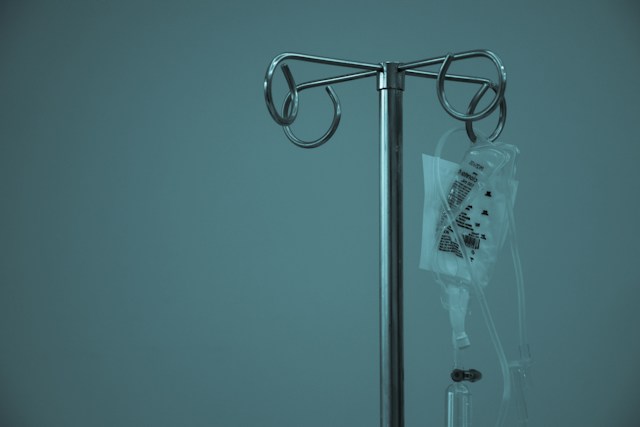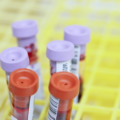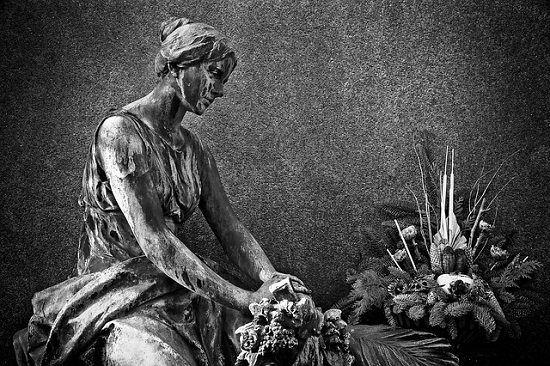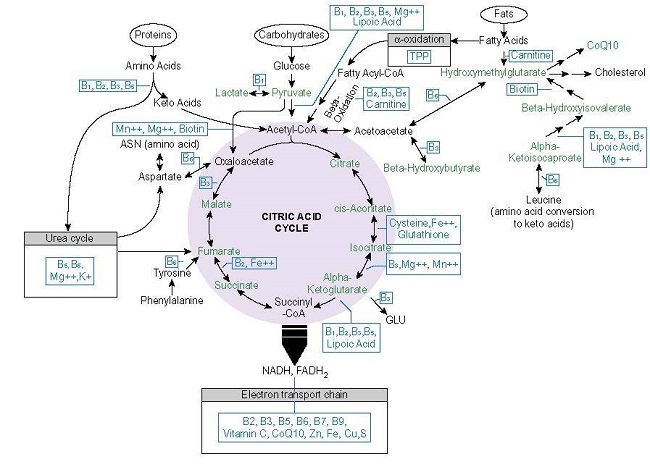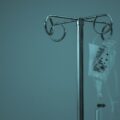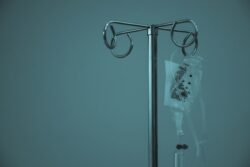My father is dying, slowly and painfully. It is a death no one should endure. His body is failing and has been for the last 8 months. The intense polypharmacy applied in recent months, indeed, over a lifetime, may have prolonged his life but also initiated a cascade of additional illnesses that make death imminent, but not imminent enough. With each new drug, something else fails but because his ‘illnesses’ are ‘treatable’, they continue to treat, without regard to the suffering or the fact that while these treatments may resolve this or that immediate issue, each new drug or intervention initiates other symptoms or illnesses. Although, these interventions may extend his life, such as it is, inasmuch as his body will somehow continue to breathe, his heart will continue to pump, he is suffering and will continue to suffer far more because of these treatments than he would have without them.
He can no longer move himself (regular fluoroquinolone use leading to falls, fractures and the endless edema for which Lasix was prescribed). He has lost bowel and bladder control. His liver is failing (longstanding cirrhosis exacerbated by recent events). His heart is failing (endocarditis). He is mind is failing. He is basically deaf (long term use of Lasix). He is confused, angry and is ready to die, but they won’t let him. He exists in this medical no-man’s land, where the determination of life and death is not the patient’s wish, nor even the obvious downward trajectory that multi-organ failure promises, but whether any of these health issues is treatable, alone and irrespective of the cumulative effects of each illness or each treatment protocol on survivability. In isolation, can this or that condition be treated and thus be considered survivable? That seems to be the question. If yes, then death is not considered imminent and if death is not imminent then we keep the patient alive and keep treating no matter the decrements to ‘life’, no matter the limited prospect of survivability, or even the patient’s wishes.
Just treat. And bill. Because here’s the kicker, death is not billable, at least not for the poor. A good death is not allowed per Medicare/Medicaid. One must exhaust all medical treatments before death is permitted, even if those treatments cause more suffering than they relieve. One must similarly exhaust all financial resources before palliative care and death are permitted. It is only when those two criteria are met, when every medical treatment has been employed and when all of the patient’s nominal financial resources have been drained, only then, will the agencies allow hospice. Not before.
If one refuses medical treatments, preferring hospice instead, Medicare will not pay for the care involved in this process, even though the economics, not to mention the ethics, align more favorably with hospice, than the treat-at-all costs and exhaust-all-resources models. One has to move to a private facility in order to die peacefully. If there are not sufficient financial resources to cover the expense of a private facility, one is either stuck waiting to die by unending, fruitless, and ultimately costly, medical interventions or whatever remains of the individual’s financial resources must be liquidated and given over to the care facility. Only then will Medicaid or hospice care be considered.
You might be thinking, why not simply refuse care and up and leave the facility? Wouldn’t this resolve the issue, give one autonomy over one’s death, take the costs out of the equation? Sure, if the patient was sufficiently ambulatory and coherent to make such a move. In this case, and I am afraid in many others, it is simply not possible. He is seriously ill. He is dying. He has no ability to bear his own weight, to control his own bowel or bladder. He can barely breathe and is only nominally coherent. He cannot simply leave the facility. He is trapped; trapped by his ailing body, but more importantly, trapped by an unscrupulous system that places medical billing over all else. While some might argue that this about the sanctity of life, that we should do everything possible to extend life. It is not. This is about medical economics pure and simple. It is sanctified torture, for profit, under the auspices of care. It is a clusterf@ck of institutionalized malfeasance. It is what death looks like in America. No grace. No mercy. No humanity.
Postscript: One week after writing this we were able to move him to a private hospice facility where he died 58 hours later. This was no easy task, both because of his financial situation but also because he did not meet requirements for admission to many of the facilities. Indeed, he probably did not fully meet the requirements for this facility, but they admitted him anyway and made his last hours on the planet as comfortable as possible. For that I am grateful.
Had we not been able to navigate this, however, he would have remained in the hospital, suffering through a seemingly endless array of life-prolonging interventions until his body gave out in a manner that was sufficiently acute to allow him to die. I will have more about this in subsequent posts, but for now, to everyone that is facing even the slightest possibility of a loved one facing death and needing end-of-life or hospice care, begin your research early and seek treatment in a hospital that understands the difference between prolonging life at all costs versus supporting end-of-life measures. There is a huge difference. The hospital to which he was admitted favored prolonging life at all costs, well beyond what was humane and in contradiction to the patient’s wishes; that coupled with the inability to seek in-home hospice care, the typical mode for hospice care, made his last weeks needlessly painful.
Call for Papers
In the coming months we would like to explore death and dying in America and elsewhere. We are interested in personal stories as well as research papers looking into the medical economics and ethics that guide decision-making. For more details, contact us.
We Need Your Help
More people than ever are reading Hormones Matter, a testament to the need for independent voices in health and medicine. We are not funded and accept limited advertising. Unlike many health sites, we don’t force you to purchase a subscription. We believe health information should be open to all. If you read Hormones Matter, like it, please help support it. Contribute now.
Yes, I would like to support Hormones Matter.
Photo by Marcelo Leal on Unsplash.
